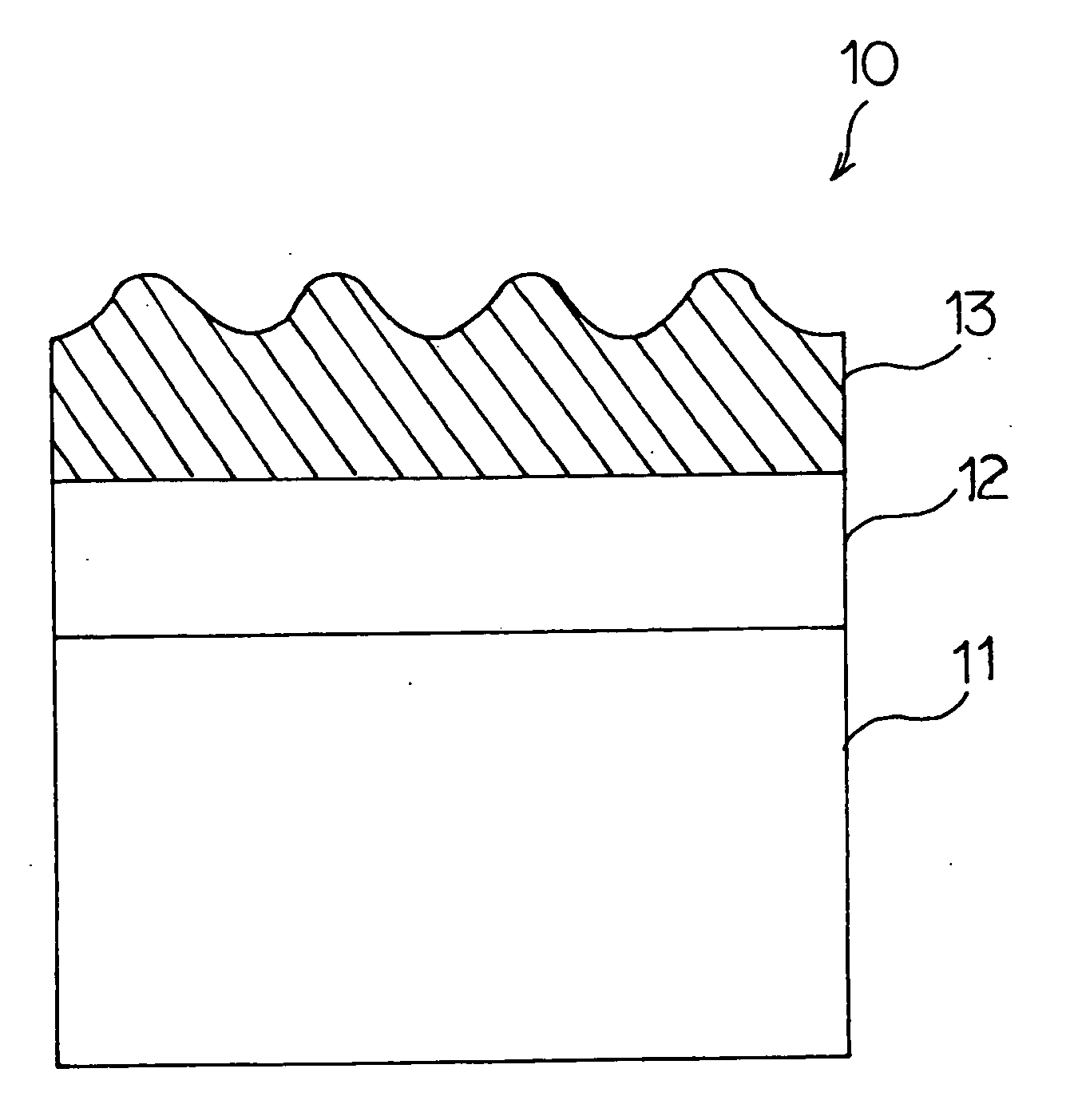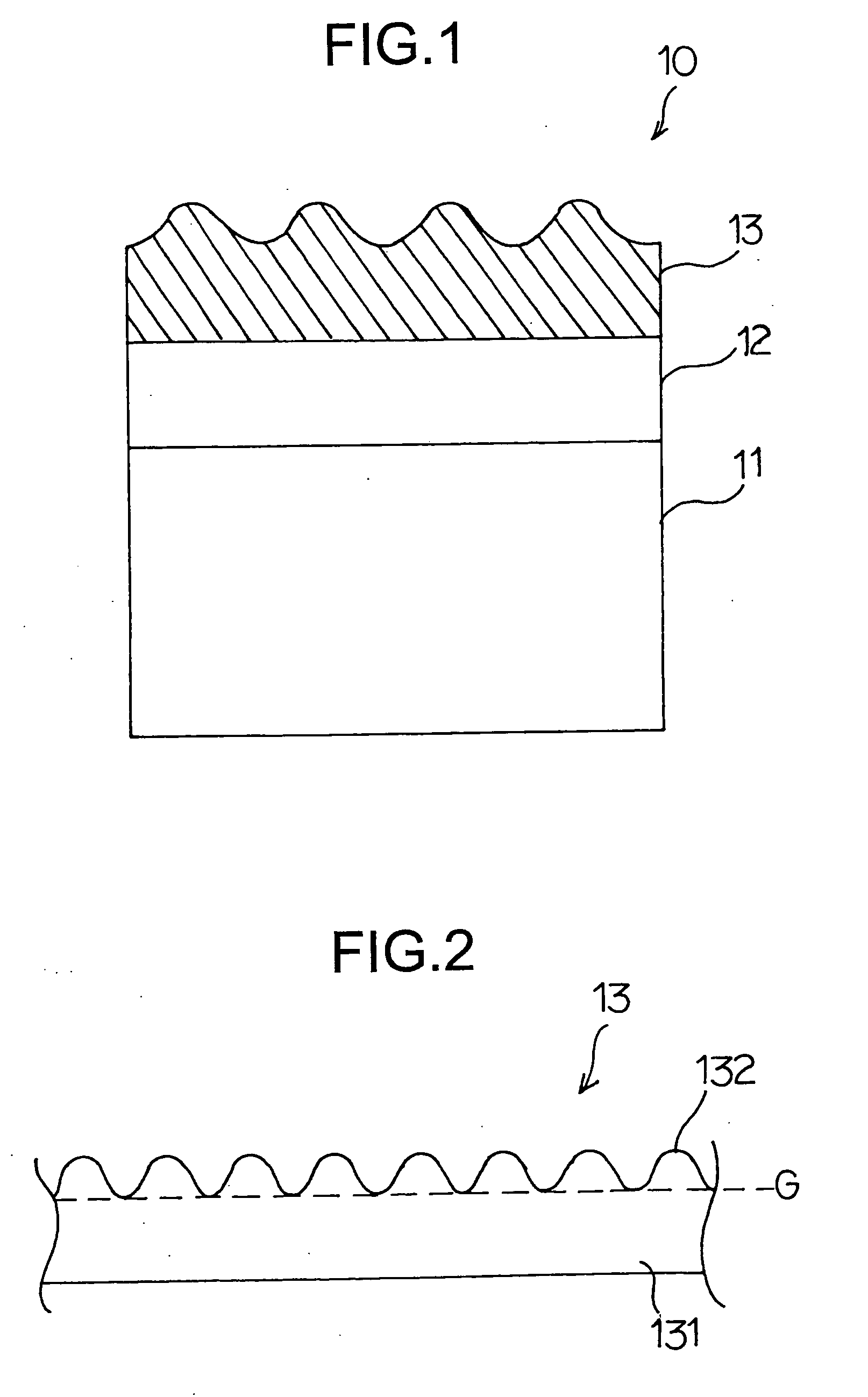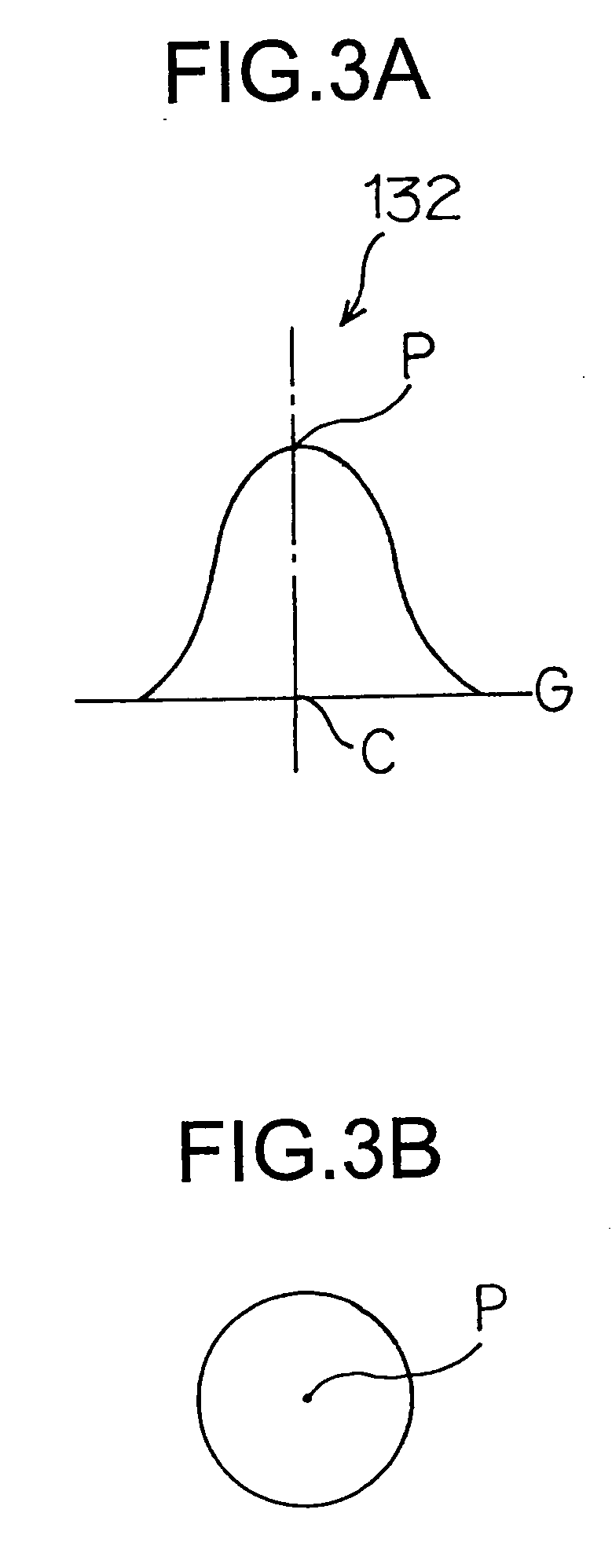Screen, optical film, and method of manufacturing an optical film
- Summary
- Abstract
- Description
- Claims
- Application Information
AI Technical Summary
Benefits of technology
Problems solved by technology
Method used
Image
Examples
Embodiment Construction
[0076] Hereinafter, a front projector screen related to a first embodiment of the present invention is described with reference to the accompanying drawings. It is to be noted, however, that the configuration described below is merely an example, and the present invention is not limited thereto.
[0077]FIG. 1 is a sectional view showing a configuration related to the first embodiment of the present invention. As shown in FIG. 1, a front projector screen 10 has a reflective layer 12 provided on a screen substrate 11, and a diffusion layer 13 provided thereon.
[0078] The screen substrate 11 is a support member of the front projector screen. Various materials may be used for the screen substrate 11, as long as the material has strength sufficient for use as a screen. For example, such a material may include polymers, such as polyethylene terephthalate (PET), polyethylene naphthalate (PEN), polyether sulfone (PES), and polyolefin (PO).
[0079] The reflective layer 12 has the function of r...
PUM
 Login to View More
Login to View More Abstract
Description
Claims
Application Information
 Login to View More
Login to View More - R&D
- Intellectual Property
- Life Sciences
- Materials
- Tech Scout
- Unparalleled Data Quality
- Higher Quality Content
- 60% Fewer Hallucinations
Browse by: Latest US Patents, China's latest patents, Technical Efficacy Thesaurus, Application Domain, Technology Topic, Popular Technical Reports.
© 2025 PatSnap. All rights reserved.Legal|Privacy policy|Modern Slavery Act Transparency Statement|Sitemap|About US| Contact US: help@patsnap.com



